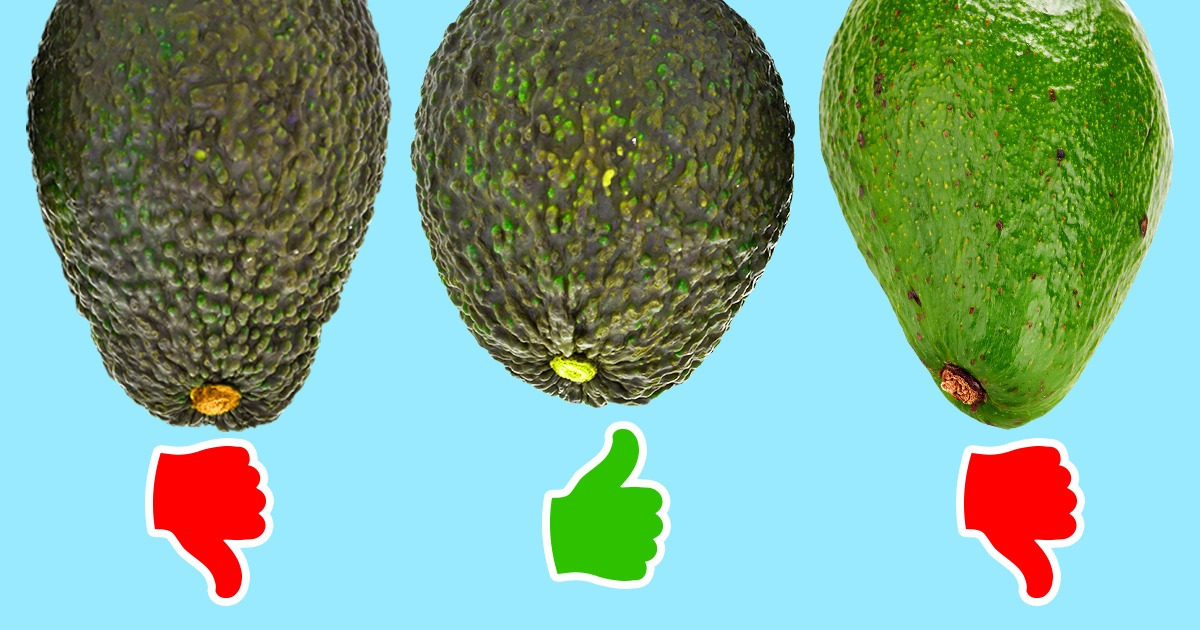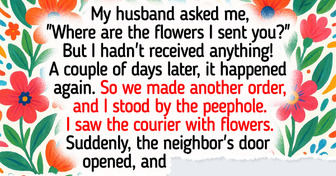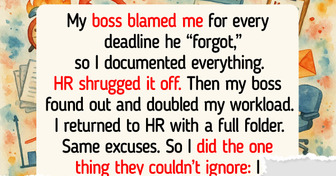I Refused to Stay After My Husband Secretly Spoiled His Daughter—Then I Heard the Truth


Hi! My name is Maria Troitskaia. I work as a confectioner and would like to share my experience on how to choose ripe and tasty fruits and vegetables. This article will help you navigate better among all the varieties of products available in supermarkets, especially if you still prefer shiny apples.
Specifically for Bright Side, I collected tips and recommendations about what you should pay attention to if you want to choose the most flavorful and useful fruits and vegetables for your future culinary masterpieces.
Many people think that tomatoes on branches are fresher and, therefore, choose them. In fact, a stalk is not an indicator of the freshness but of the greenness of the tomato. Ripe tomatoes fall off of the vine by themselves. If a vine still holds them, it means that tomatoes were cut off before being ripened and left to ripen in the box. These tomatoes have very few vitamins and useful elements.
The color of a good tomato should be homogeneous and saturated, without green areas. Moreover, its smell should be pleasant. It’s pretty easy to spot nitrate tomatoes in a store — they are elastic but not firm. If you press it, you won’t see a trace of your fingerprint left on the tomato. Good tomatoes should be soft to the touch.
The tastiest and sweetest watermelons ripen in the period from the second half of August until the end of September. Some producers spray early watermelons with nitrogen fertilizers and growth stimulants trying to collect the harvest faster. All melons absorb these dangerous substances from the environment which is why you shouldn’t buy them off the road. It’s the same reason why you shouldn’t buy watermelons that are already cut — they could contain many microbes.
Opt for a medium-sized watermelon. Bright, contrasting stripes and a shiny crust are the indicators of its ripeness. A ripe watermelon has a dry tail because when a watermelon ripens it stops taking moisture from the ground. A watermelon’s side should be a saturated yellow color and its size should be 2-4 inches. Knock a watermelon with your fist — ripe fruits make a resonant sound.
There are few people who know that bell peppers have 2 types — male and female and that they differ by taste. In order to learn the type of a bell pepper, turn it upside down. If it has 4 sectors — it’s a female type, if it has 3 sectors, it’s a male type. The shape of a male type is more elongated, while the female type is shorter and wider. A female type is much sweeter and it can be eaten raw.
The bell peppers of a male type are more sour and firm. They are good for jarring and cooking. The heavier the bell pepper, the juicier it is. Its tail should be green and firm. Search for peppers without orange spots — they indicate that the pepper has become a victim of insects.
Opt for medium-sized apples. An apple should be firm and heavy by weight. Don’t buy shiny apples. In order to make fruit look good, manufacturers coat them with wax or natural resins.
When buying a green apple, pay attention to a gray net near the stem — if it’s there, that means the apple has ripened. It’s better to buy apples during the high season — that’s when they are the tastiest and richest in vitamins; they are less nutritious in other months.
Buy cherries during high season — in June or July. The berries are more nutritious, tastier, and cheaper at this time. Check cherries by touch before buying them — they shouldn’t be too solid or too soft and there should be no sweat on them. The berries should be shiny and saturated in color. The darker the berries are, the more useful sugars, carotenoids, anthocyanins, and organic acids they have.
Berries should always be sold with stems. Fresh cherries have green and firm stems. If the berries are sticky, it’s likely that they are not fresh. The smell of fermentation means that the berries are spoiled — don’t buy them.
When buying plums, opt for fruits with a homogenous color. Also, avoid buying cracked plums, as well as plums with dents, stains, and other injuries. A plum should be heavy, with a pleasant sweet smell. If the fruit’s skin has a thin white layer, it means it was picked recently. Pay attention to the stem — a ripened plum must have a ripened stem.
Give preference to cucumbers that are a bright green color. They should be firm to the touch. If a cucumber is fresh, its skin color should be saturated, without any shine. A peel that is too shiny can signal that the cucumber has been fertilized with nitrates and coated with wax.
Pay attention to the tail — if it’s withered and dry, it’s overripe. Buy cucumbers that are medium-sized, about 4-6 inches in length. Overdried vegetables have a watery taste and an unpleasant bitterness. Stains, cracks, and bruising on the surface of the cucumber are also unacceptable.
Look for bananas that are a bright yellow color. Small dots on their peel indicate that the banana is ripe and is ready to be used. However, you shouldn’t store this type of banana for more than 2 days -or it will overripen.
Also, don’t buy bananas with big black spots — there is a decay process already going on inside. The size of the fruit doesn’t matter when buying bananas, if you are not choosing between baby bananas and bananas that are a normal size. Baby bananas are always sweet, but they are also more expensive.
A ripe pear can be easily identified by a bright aroma. The fruit itself should be neither very firm nor too soft and there should be no damage or dent on its peel. Brown spots near the tail indicate that the fruit is not fresh. There are pear types that maintain a bright green color, but, in most cases a small “blush” is a good indicator of the fruit’s ripeness.
A ripe lemon has a shiny peel as if it was polished. Also, pay attention to the smoothness of the peel — the lemons from the first crop (collected from the lemon-bearing tree for the first time) have a smooth peel. The concentration of useful elements in them is higher than in the fruits of further harvests. Skin that is too lumpy is usually thick and weighs more than the fruit with a thin peel, but they have less pulp.
How do you choose fruits and vegetables? Do you know any other tips? Please tell us about them in the comments!











